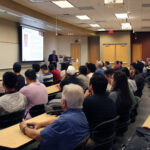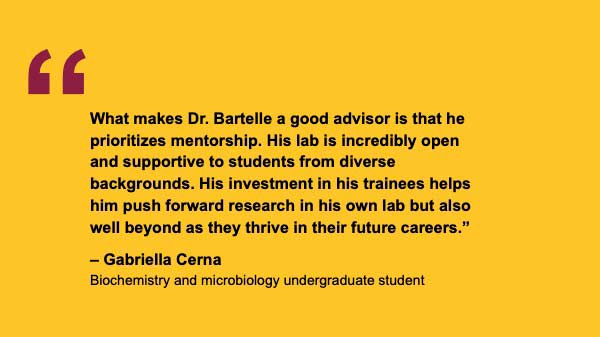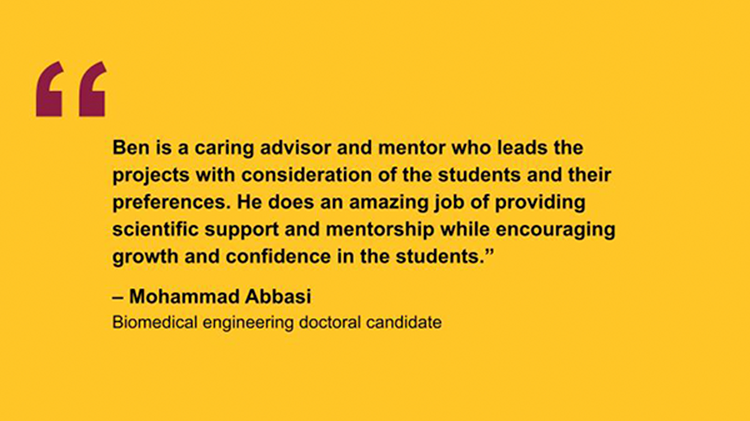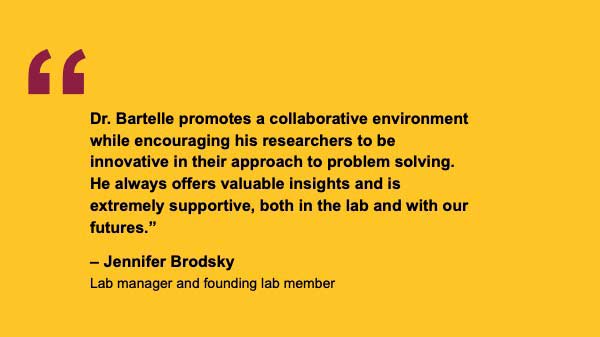
ASU’s Benjamin Bartelle receives NIH New Innovator Award
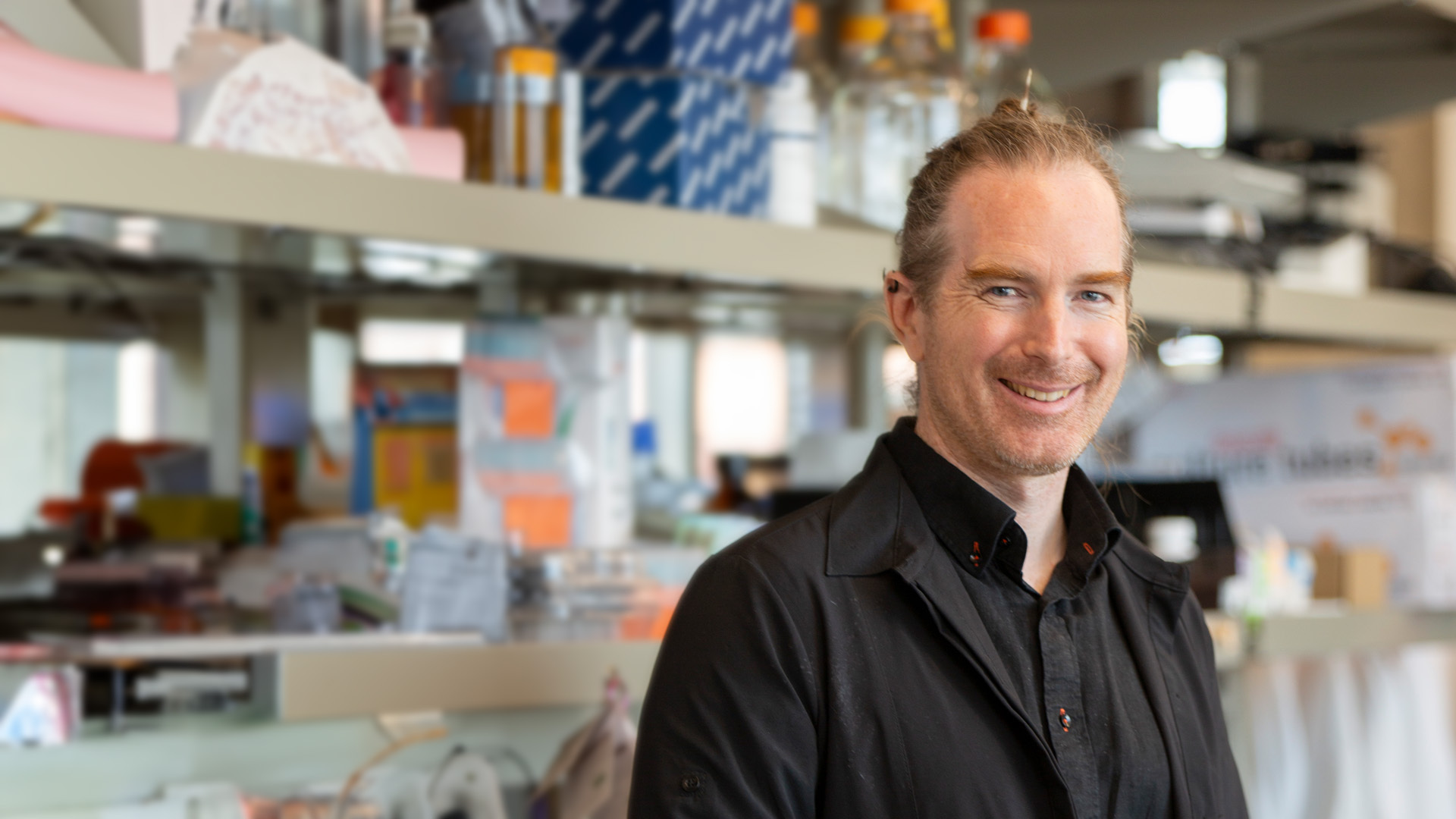
Benjamin Bartelle has received the National Institutes of Health Director’s New Innovator Award, providing him with $1.5 million in research funding for the next two years.
An assistant professor of biomedical engineering in the School of Biological and Health Systems Engineering, part of the Ira A. Fulton Schools of Engineering at Arizona State University, Bartelle’s work focuses on developing tools to resolve and manipulate immunological challenges within the nervous system. His novel approaches to neurobiology data collection helped him earn the award, part of the institute’s High-Risk, High-Reward Research program.
“This award has given me clarity and peace of mind about the path forward,” Bartelle says. “It means more opportunities for my work and more opportunities for me to support my students.”
The NIH Director’s New Innovator Award was established to support unconventional approaches to biomedical and behavioral research challenges. The award supports innovative early-career researchers whose projects have great potential to benefit the public in ways aligned with the NIH’s mission.
A history of bioengineering innovation
Throughout his career, Bartelle has gravitated toward attempting to make the impossible become possible.
Bartelle’s research initially centered on how receptors in the body transmit information. As he progressed in his career, his interests evolved to focus on methods for assessing receptor functions and how to capture images of microscopic biological signaling functions across a living brain.
This transition exposed Bartelle to the new world of imaging for biomedical engineering and motivated him to capture visual representations showing how biological systems interact with each other on a molecular level.
“I build tools to answer hard questions,” Bartelle says. “If anyone knew how it all worked, we’d be done by now. I try to connect the dots to show how things could work.”
He is now developing tools for brain technology research, using his experience in non-invasive imaging tools to develop assays of neuroimmune biology.
Bartelle’s blended background in synthetic biology and technology development has given him a unique perspective on his work, which is being recognized across the field. In addition to his New Innovator Award, Bartelle was also recognized with the NIH National Institute of Biomedical Imaging and Bioengineering Trailblazer R21 Award.
A career using new methods to conquer previous problems
Bartelle often starts his projects in areas where prior research met dead ends as a lack of existing technology curtailed progress. He then applies and adapts alternative analytical methods to determine how different techniques can be effective. One of these instances is his work to monitor cellular brain activity.
In 2023, Bartelle received the New Innovator Award for designing a method to track the cellular activity of the brain’s innate immune system. Among this class of cells are microglia, immune cells with the remarkable ability to identify threats to the nervous system and react accordingly, either by initiating nervous system repair or disposal of the threat.
Dysregulated microglia have been associated with loss of brain tissue and progression of neurological disease.
The sensitive and secluded nature of the brain makes collecting data challenging. Further complicating research is the stress the brain undergoes in response to observational methods such as behavior analysis and sample collection, making it difficult to get accurate, authentic data.
Bartelle recognized the potential between the use of popular imaging tools to observe molecular brain activity and health. As a solution, his lab developed new, less invasive methods to assess genetic and metabolic functions in microglia using MRI technology. His team’s innovations are now being tested in clinical trials.
Bartelle’s team is also working to develop protein engineering methodologies as a platform for engineering new therapies.
“I don’t really have medical literature to build off of other than what was reported not to work in the past, but I’m quick to spot an angle that hasn’t been explored and turn theory into methodology,” Bartelle says. “I don’t have the conceit that any of these things are going to work better than what people have tried, but I stay open to alternative approaches.”
Future focus on developing further health care solutions
Santiago Ochoa, a biomedical engineering graduate student working in Bartelle’s lab, says the recognition from the NIH director is well-deserved.
“When meeting Dr. Bartelle for the first time, people are often struck by the breadth and depth of what he knows,” Ochoa says. “There is no conversation where he cannot pull insight from the piles of scientific literature amassed in his head or his own polymathic experience.
“No field is too far-flung and no fact is too esoteric. I think this allows him to be truly innovative not only in how he sets about solving intractable issues, but how he even conceives of problems in the first place.”
As a tool builder, Bartelle knows he can’t be certain how the technology he creates will be adopted by other researchers or if it can help them surpass their obstacles. However, he says he still enjoys seeing his techniques incorporated into the field beyond his original scope to achieve new advances.
Even with all his accomplishments so far, Bartelle refuses to rest on his laurels, saying he instead sees the accolades and funding as incentives to work harder.
“My priority is to support my team so we can pursue our goals,” he says. “I only ever hoped I would make it this far. Receiving the NIH Director’s New Innovator Award is very motivating to see how far we can still go.”



















